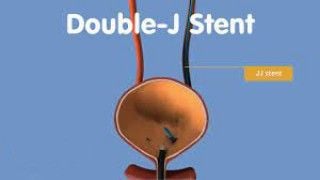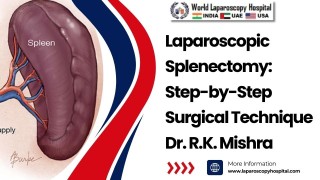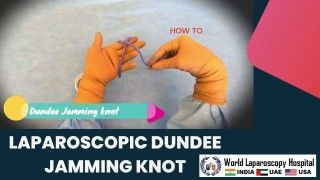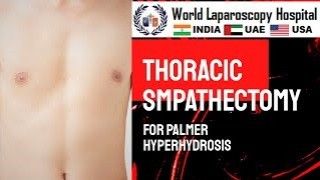Restoring Stability: Suture Rectopexy Offers Effective Treatment for Rectal Prolapse
Add to
Share
707 views
Report
1 year ago
Description
Rectal prolapse is a distressing condition where the rectum protrudes or falls out of its normal position, leading to significant discomfort and functional impairment. Fortunately, medical advancements have provided an effective solution to this ailment in the form of suture rectopexy. This innovative surgical procedure not only restores stability to the rectum but also offers long-lasting relief for patients suffering from rectal prolapse. Rectal prolapse occurs when the rectal wall weakens or stretches, causing it to extend out of the anus. This condition primarily affects older individuals, women who have given birth multiple times, those with a history of chronic constipation, and individuals with connective tissue disorders. The symptoms can range from mild to severe and may include rectal bleeding, pain, a sensation of fullness or heaviness in the rectum, and difficulty with bowel movements. Suture rectopexy, also known as posterior rectopexy or mesh rectopexy, is a surgical procedure designed to correct rectal prolapse by anchoring the rectum to the sacrum, a triangular bone at the base of the spine. The procedure involves making small incisions in the abdomen to access the affected area. The surgeon then lifts the rectum back into its normal position and secures it in place using sutures or mesh. By providing mechanical support and restoring the rectum's anatomical position, suture rectopexy addresses the underlying cause of the prolapse. One of the key advantages of suture rectopexy is its minimally invasive nature. Traditionally, rectal prolapse was treated with open surgery, which required larger incisions and longer recovery times. However, suture rectopexy utilizes laparoscopic or robotic-assisted techniques, enabling surgeons to operate through small incisions with the help of specialized instruments and a camera. This approach reduces postoperative pain, minimizes scarring, and accelerates recovery, allowing patients to return to their daily activities sooner. The success rate of suture rectopexy is quite high, with studies reporting favorable outcomes in terms of symptom improvement and prolapse recurrence. By firmly fixing the rectum to the sacrum, the procedure prevents further descent or protrusion, effectively eliminating the bothersome symptoms associated with rectal prolapse. Moreover, the use of synthetic mesh during rectopexy has shown promising results, offering additional reinforcement and reducing the risk of recurrence. Like any surgical procedure, suture rectopexy carries potential risks and complications, such as infection, bleeding, damage to surrounding structures, or bowel dysfunction. However, these risks are relatively rare and can be minimized with proper preoperative evaluation and postoperative care. It is crucial for patients to have a thorough discussion with their surgeon to understand the benefits, risks, and expected outcomes of suture rectopexy based on their individual condition. In conclusion, suture rectopexy has emerged as an effective and minimally invasive treatment option for rectal prolapse. By restoring stability and repositioning the rectum, this procedure offers patients long-lasting relief from the distressing symptoms associated with rectal prolapse. With its high success rate and faster recovery times, suture rectopexy brings hope to individuals suffering from rectal prolapse, enabling them to regain their quality of life and enjoy a future free from the burdens of this condition. Suture rectopexy not only addresses the physical discomfort caused by rectal prolapse but also improves the overall quality of life for patients. Rectal prolapse can significantly impact daily activities, including bowel movements, hygiene, and social interactions. It can lead to embarrassment, anxiety, and a loss of confidence. By effectively treating rectal prolapse, suture rectopexy helps patients regain their self-esteem and allows them to resume their normal routines without the fear of prolapse-related complications. The procedure's long-term success is a testament to its durability. Studies have shown that suture rectopexy provides excellent results even years after the surgery. Patients experience sustained improvement in symptoms, minimal recurrence rates, and a high level of patient satisfaction. This long-lasting benefit is particularly crucial for older individuals or those with comorbidities who may be less inclined to undergo multiple surgeries or interventions. Suture rectopexy also offers a valuable alternative to other treatment options for rectal prolapse. While there are non-surgical approaches available, such as pelvic floor exercises or the use of pessaries, these methods often provide temporary relief and do not address the underlying cause of the prolapse. In cases where conservative measures have proven ineffective or when the prolapse is severe, suture rectopexy remains a reliable and definitive treatment option. It is worth noting that suture rectopexy requires skilled surgeons who are experienced in performing the procedure. Laparoscopic or robotic techniques demand expertise and precision. Therefore, it is crucial for patients to seek consultation with a qualified colorectal surgeon or a specialist in pelvic floor disorders. A thorough evaluation of the individual's condition and overall health will help determine if suture rectopexy is the most suitable option. In recent years, advancements in surgical technology have further enhanced the outcomes of suture rectopexy. Robotic-assisted procedures provide enhanced dexterity, visualization, and control for the surgeon, resulting in improved precision and potentially reducing the risk of complications. These technological advancements continue to push the boundaries of what can be achieved in rectal prolapse treatment, providing even more promising results for patients. In conclusion, suture rectopexy stands as an effective and reliable treatment option for rectal prolapse, offering long-term stability and relief from symptoms. With its minimally invasive approach, high success rates, and long-lasting benefits, this surgical procedure has revolutionized the management of rectal prolapse. By restoring stability and improving quality of life, suture rectopexy provides hope to patients and reaffirms the advancements made in colorectal surgery. Rectal prolapse can cause significant discomfort and functional impairment, impacting the daily lives of those affected. Fortunately, suture rectopexy offers an effective solution to this condition. By anchoring the rectum to the sacrum using sutures or mesh, this innovative surgical procedure restores stability to the rectum, providing long-lasting relief. With its minimally invasive approach and high success rates, suture rectopexy has revolutionized the treatment of rectal prolapse, offering patients the opportunity to regain their quality of life and enjoy a future free from the burdens of this condition. Rectal prolapse can be a distressing condition that affects individuals of various backgrounds. However, there is a beacon of hope in the form of suture rectopexy. This surgical procedure offers an effective and lasting solution for rectal prolapse by securing the rectum back into its normal position. With its minimally invasive approach, suture rectopexy reduces postoperative discomfort and accelerates recovery, allowing patients to return to their daily activities sooner. By addressing the underlying cause of rectal prolapse and providing stability, this procedure restores confidence and improves the overall quality of life for individuals who have been impacted by this condition.
Similar Videos






